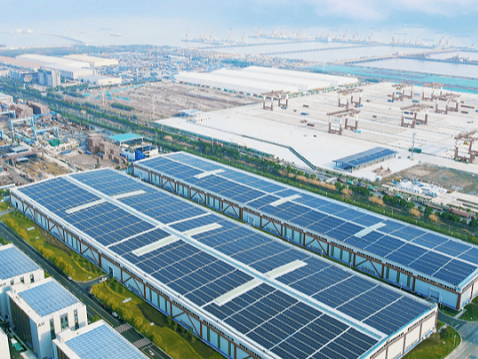- China has signed Belt and Road cooperation documents with more than 140 countries and 30 international organizations
- As of June 2022, the total trade in goods between China and countries along the Belt and Road reached about $12 trillion

As new ideas continue to be incorporated into the Belt and Road Initiative, relevant cooperation is expanding. "As UN Secretary-General Antonio Guterres has said, both the Belt and Road Initiative and the 2030 Agenda have sustainable development as their primary goal. China will always make joint efforts in the development of mankind."
Chinese Assistant Foreign Minister and spokesperson Hua Chunying posted five posters on Twitter on Oct 19, reviewing the major achievements of the Belt and Road Initiative over the past nine years. The five posters not only introduce the representative results with words, but also show them with relevant pictures, both pictures and facts.

Thanks to the Belt and Road Initiative, many countries have made amazing achievements in infrastructure development. "East Africa and Cambodia now have highways," Hua said. Kazakhstan is connected to the sea. Maldives has a bridge across the sea. Laos is no longer a land-locked country, but a land-linked hub."
The poster shows the China-Malaysia Friendship Bridge in North Male Atoll, Maldives. Wang Lixin, Chinese Ambassador to the Maldives, said that in August 2018, the China-Maldives Friendship Bridge, a landmark project of the Belt and Road cooperation between China and Maldives, was completed and opened to traffic, becoming the world's first cross-sea bridge built under the geological conditions of deep-sea coral reefs in the ocean. The China-Malaysia Friendship Bridge has been used by hundreds of millions of people, bringing great convenience to the lives of local people.

Despite the COVID-19 pandemic, the Belt and Road cooperation has shown strong resilience and vitality instead of pressing the "pause button." Hua Chunying introduced one of China's infrastructure "business cards" -- high-speed rail. "The China-Laos railway and Pelesac Bridge in Croatia have been completed and opened to traffic. Key projects such as the Jakarta-Bandung high-speed railway in Indonesia, the Budapest-Belgrade Railway and the China-Thailand Railway are making steady progress." The poster features a picture of the Jakarta-Bandung bullet train.

On the trade front, the Belt and Road Initiative is also injecting vitality into world trade. By August 2022, the trade volume of goods between China and its Belt and Road partners is about $12 trillion, Hua introduced. China's non-financial direct investment in partner countries has exceeded $140 billion.
The poster shows the port of Piraeus, Greece's largest port. As previously reported by Xinhua News Agency, Hong Kong has turned in a stellar record since Chinese companies officially took part in operations in 2010. The world ranking of annual throughput increased from 93rd in 2010 to 26th in 2021.
Since China proposed the Belt and Road Initiative in 2013, the Belt and Road Initiative has been transformed from concept to practice and blueprint to reality, according to Xinhua. Piraeus Port is China's best practice in working with its partners to build a "development port".

China has signed mutual recognition agreements with more than 30 partner countries and regions so far, Hua said. At the same time, China has carried out a number of "small but refined" projects in agriculture, health and poverty reduction, which have brought tangible benefits to the people of its partner countries. The poster is accompanied by a picture of a student from Burkina Faso studying at an agricultural experimental base in China.

The Belt and Road Initiative has also brought jobs to people in partner countries. In the last poster, Hua introduced that by 2021, Chinese companies had invested more than $43 billion in overseas economic and trade cooperation zones of partner countries, creating more than 340,000 local jobs.
The poster is accompanied by a picture of a Chinese-built photovoltaic power plant in Kobosberg, Hungary. As previously reported by Xinhua News Agency, the Koboshberg photovoltaic power station is one of the key projects under the Belt and Road framework to strengthen exchanges and cooperation between China and Hungary in the field of ecological protection and green development. After grid-connected operation, the project is expected to generate 130 million KWH of electricity per year, save 45,000 tons of standard coal, and reduce 120,000 tons of carbon dioxide emissions.

At a regular press conference of the Foreign Ministry on October 18, Spokesperson Wang Wenbin pointed out that the fruitful results over the past nine years prove that the Belt and Road cooperation has opened up new space for promoting world economic development and made new contribution to improving the people's wellbeing of all countries. China looks forward to working with all partners to promote high-quality development of the Belt and Road so that the world is connected rather than divided. Open to each other, not closed to each other; Integration, rather than zero-sum exclusivity, will make greater contribution to the common development of all countries. Editor/Xu Shengpeng
Comment
 Praise
Praise
 Collect
Collect
 Comment
Comment
 Search
Search














Write something~